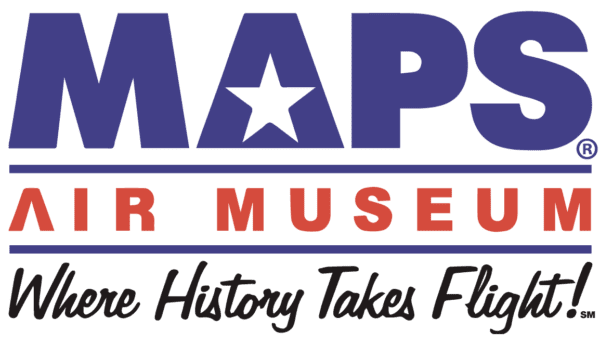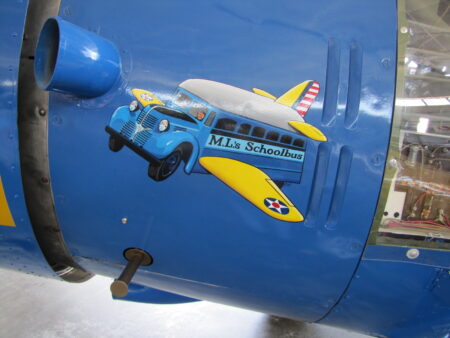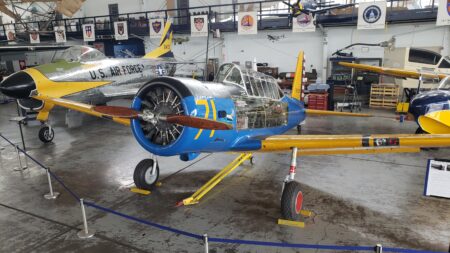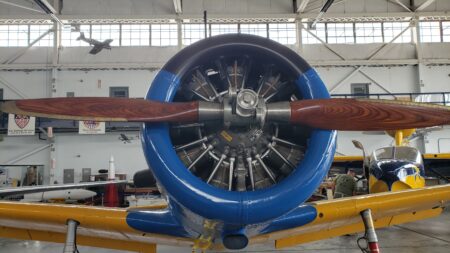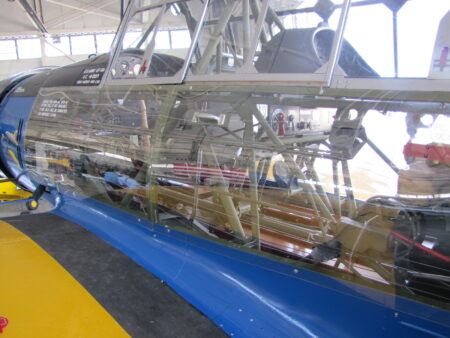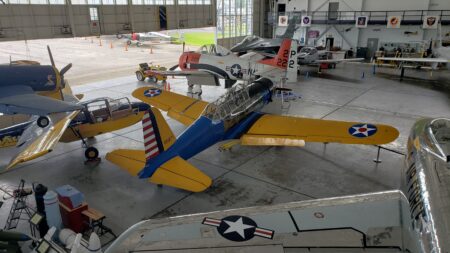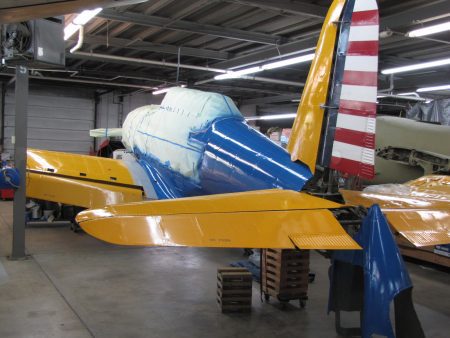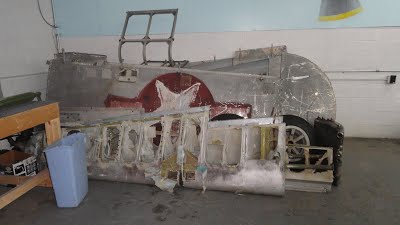Our Aircraft’s History
Vultee BT-13A “Valiant” (Model- 54) (S/N 41-21271; MSN 74-5109; C/S N64852) ~ Nicknamed by many of her pilots as the “Vultee Vibrator”, she was later re-designated the T-13A in 1948. Modern S/N is now 5110. After pilots initial training in a “primary” aircraft, such as the BT-13, BT-17 or BT-19, pilots then went to their basic aircraft, like the Vultee BT-13, then subsequently to their advanced aircraft.
Our BT-13A was built by the Vultee Aircraft Company (which become Convair in 1943) in Downey, California on March 19, 1942 and was accepted by the US Army Air Corps on March 25, 1942. Her first assignment was with the San Angelo Air Corps Basic Flying Training School (BFTS), Air Training Command (ATC) at San Angelo Army Air Field, Texas. Below are her others stations:
- June 1944 – 2533rd Army Air Force (AAF) Base Unit, BFTS, ATC, Goodfellow Field (formerly San Angelo Army Air Field), San Angelo, Texas
- September 1944 – 2525th AAF Base Unit, (BFTS), ATC, Liberal Army Air Field, Liberal, Kansas
- May 1945 – Dropped from active inventory; disposed of as surplus
- July 1946 – Purchased by Plains Flying Services, Amarillo, Texas
- January 1955 – Sold to Plains Aero Services, Amarillo Texas; converted for use as an aerial spray platform
- June 1966 – Sold to Air Pest Patrol, Inc., Henderson Kentucky
- May 1970 – Sold to Mid-Continent Aircraft Corporation, Hayti, Missouri
- October 1970 – Sold to private owner in Lyons, Kansas
- July 2002 – Acquired b the Military Aircraft Restoration Corporation (MARC); placed on loan to the Historical Aircraft Squadron, Fairfield County Airport, Lancaster, Ohio
Reference the 2 below photos: Normally training aircraft did not have nose art, but to honor M.L. we decided to put this on the airplane. M.L. has said the Canton School buses flew better than the BT 13 thus the name. M.L. with the BT 13 and holding a photo from August 1944 when he graduated from BT 13 flight school with 40.25 hours Dual (with instructor) and 40.75 hours Solo.
Her time eventually came to the MAPS Air Museum for restoration on January 28, 2012 from MARC. Our Vultee was put on display in August 2020. She is maintained by Crew Chief John Harris.
Specifications/Performance
- Role: Trainer
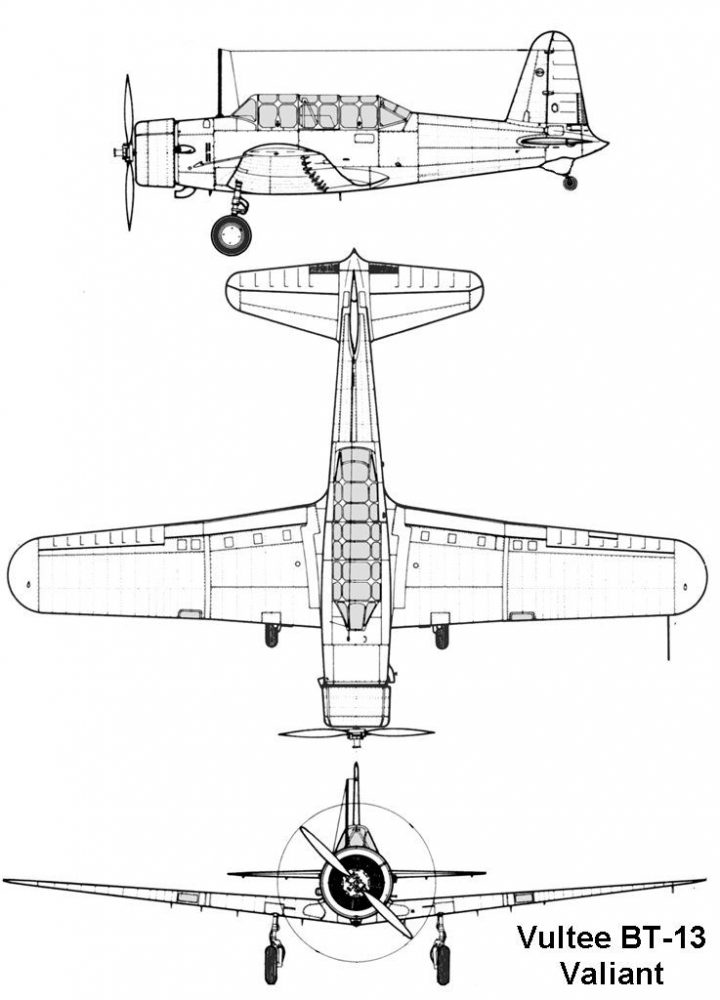
- Manufacturer: Vultee Aircraft
- First flight: March 24, 1939
- Introduction: June 1, 1940
- Produced: 1939-1944
- Built: 11,537 (all variants)
- Retired: August 5, 1945
- Crew: 2
- Length: 28 ft 10 in
- Wingspan: 42 ft
- Height: 11 ft 6 in
- Empty weight: 3,375 lb
- Gross weight: 4,496 lb
- Engine: 1 x Pratt & Whitney R-985-AN-1 nine-cylinder air-cooled radial engine, 450 hp
- Max speed: 180 mph
- Cruise speed: 130 mph
- Range: 725 mi
- Service ceiling: 21,650 ft
Armament, notable
- none
Museum display notes: The blue and yellow coloring were used on aircraft by the US Army Air Corps until 1943. They discontinued painting to save $$$ and weight later that year. Had it been accepted after May 6, 1942 the red dot would not be in the star and the red, white and blue on the tail (rudder) would have been removed after Sept 1942.
Designed to replace: Initial Army Air Corp solicitation in 1937 for a “Basic” trainer, to go between the “Primary” and “Advanced” training stages
Replaced by: North American T-6 Texan (AT-6 during Army Air Corp WWII days; SNJ by the US Navy)
